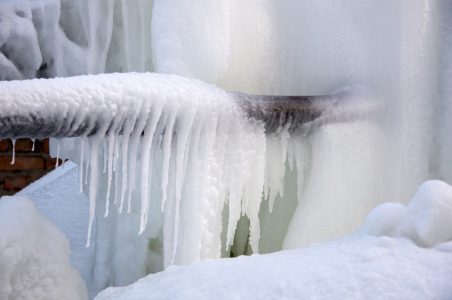Tips to Defend Your Pipes from Freezing: Specialist Advice
Tips to Defend Your Pipes from Freezing: Specialist Advice
Blog Article
This article in the next paragraphs pertaining to How to Prevent Your Pipes From Freezing is without a doubt compelling. Don't skip it.

Cold weather can wreak havoc on your pipes, especially by freezing pipelines. Below's how to avoid it from taking place and what to do if it does.
Introduction
As temperature levels drop, the danger of icy pipes increases, possibly resulting in expensive fixings and water damage. Comprehending just how to stop icy pipelines is important for home owners in cool environments.
Prevention Tips
Insulating at risk pipes
Wrap pipes in insulation sleeves or utilize heat tape to safeguard them from freezing temperatures. Focus on pipes in unheated or external areas of the home.
Heating techniques
Maintain interior spaces properly warmed, particularly areas with pipes. Open up cupboard doors to permit cozy air to circulate around pipelines under sinks.
How to determine icy pipes
Seek reduced water flow from faucets, unusual odors or sounds from pipelines, and visible frost on exposed pipelines.
Long-Term Solutions
Structural changes
Consider rerouting pipes far from outside wall surfaces or unheated locations. Add additional insulation to attics, cellars, and crawl spaces.
Updating insulation
Invest in high-grade insulation for pipes, attics, and walls. Proper insulation assists keep constant temperature levels and reduces the danger of icy pipelines.
Protecting Exterior Pipes
Garden hoses and exterior taps
Disconnect and drain yard hose pipes before winter season. Set up frost-proof spigots or cover exterior taps with shielded caps.
Comprehending Frozen Pipelines
What triggers pipelines to freeze?
Pipelines freeze when subjected to temperature levels below 32 ° F (0 ° C) for expanded durations. As water inside the pipes freezes, it increases, putting pressure on the pipe wall surfaces and potentially triggering them to burst.
Risks and problems
Icy pipes can bring about water supply disturbances, building damages, and costly repair work. Burst pipelines can flood homes and cause considerable structural damages.
Indicators of Frozen Pipeline
Determining icy pipelines early can avoid them from bursting.
What to Do If Your Pipelines Freeze
Immediate actions to take
If you suspect icy pipes, maintain faucets open to relieve stress as the ice melts. Make use of a hairdryer or towels soaked in warm water to thaw pipes gradually.
Conclusion
Stopping frozen pipes calls for proactive procedures and fast reactions. By recognizing the causes, signs, and safety nets, homeowners can safeguard their plumbing throughout winter.
Helpful Tips to Prevent Frozen Pipes this Winter
UNDERSTANDING THE BASICS: WHY PIPES FREEZE AND WHY IT’S A PROBLEM
Water freezing inside pipes is common during the winter months, but understanding why pipes freeze, and the potential problems it can cause is crucial in preventing such incidents. This section will delve into the basics of why pipes freeze and the associated problems that may arise.
THE SCIENCE BEHIND FROZEN PIPES
When water reaches freezing temperatures, it undergoes a physical transformation and solidifies into ice. This expansion of water as it freezes is the primary reason pipes can burst. As the water inside the pipe freezes, it expands, creating immense pressure on the walls. If the pressure becomes too great, the pipe can crack or rupture, leading to leaks and water damage.
FACTORS THAT CONTRIBUTE TO PIPE FREEZING
Low Temperatures: Extremely cold weather, especially below freezing, increases the risk of pipes freezing. Uninsulated or Poorly Insulated Pipes: Pipes located in unheated areas, such as basements, crawl spaces, or attics, are more prone to freezing. Insufficient insulation or lack of insulation altogether exacerbates the problem. Exterior Wall Exposure: Pipes running along exterior walls are susceptible to freezing as they encounter colder temperatures outside. Lack of Heating or Temperature Regulation: Inadequate heating or inconsistent temperature control in your home can contribute to frozen pipes. PROBLEMS CAUSED BY FROZEN PIPES
- Pipe Bursting: As mentioned earlier, the expansion of water as it freezes can cause pipes to burst, resulting in significant water damage.
- Water Damage: When pipes burst, it can lead to flooding and water damage to your property, including walls, ceilings, flooring, and personal belongings.
- Structural Damage: Prolonged exposure to water from burst pipes can compromise the structural integrity of your home, leading to costly repairs.
- Mold and Mildew Growth: Excess moisture from water damage can create a favorable environment for mold and mildew growth, posing health risks to occupants.
- Disrupted Water Supply: Frozen pipes can also result in a complete or partial loss of water supply until the issue is resolved.
WHY CERTAIN PIPES ARE MORE PRONE TO FREEZING
- Location: Pipes located in unheated or poorly insulated areas, such as basements, crawl spaces, attics, or exterior walls, are at higher risk of freezing.
- Exterior Pipes: Outdoor pipes, such as those used for irrigation or exposed plumbing, are particularly vulnerable to freezing as they are directly exposed to the elements.
- Supply Lines: Pipes that carry water from the main water supply into your home, including the main water line, are critical to protect as freezing in these lines can affect your entire plumbing system.
- Underground Pipes: Pipes buried underground, such as those connected to sprinkler systems or outdoor faucets, can be susceptible to freezing if not properly insulated.
https://busybusy.com/blog/helpful-tips-to-prevent-frozen-pipes-this-winter/

I stumbled upon that article about How to prepare your home plumbing for winter weather when doing a lookup on the web. Enjoyed our article? Please quickly share it. Help others discover it. Thank you so much for taking the time to read it.
Call Today Report this page